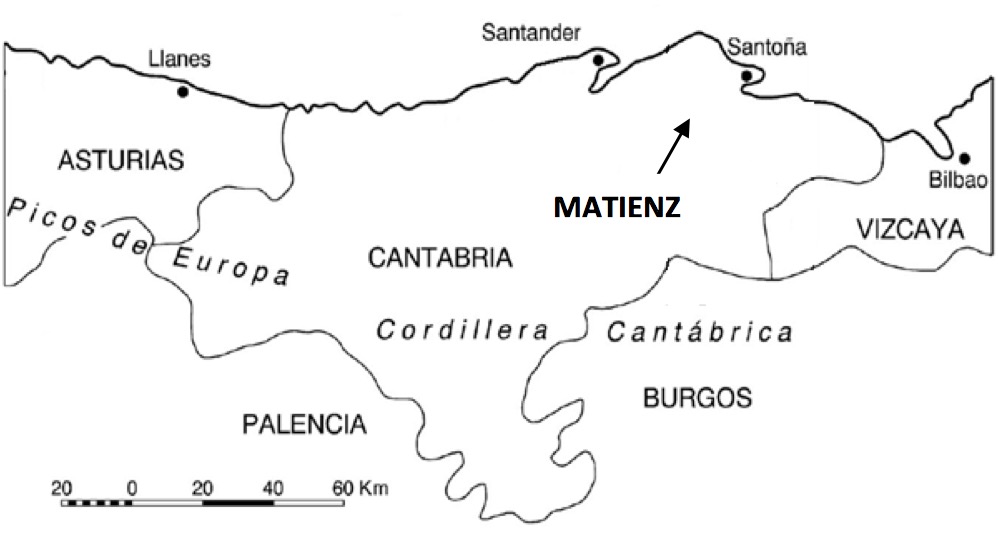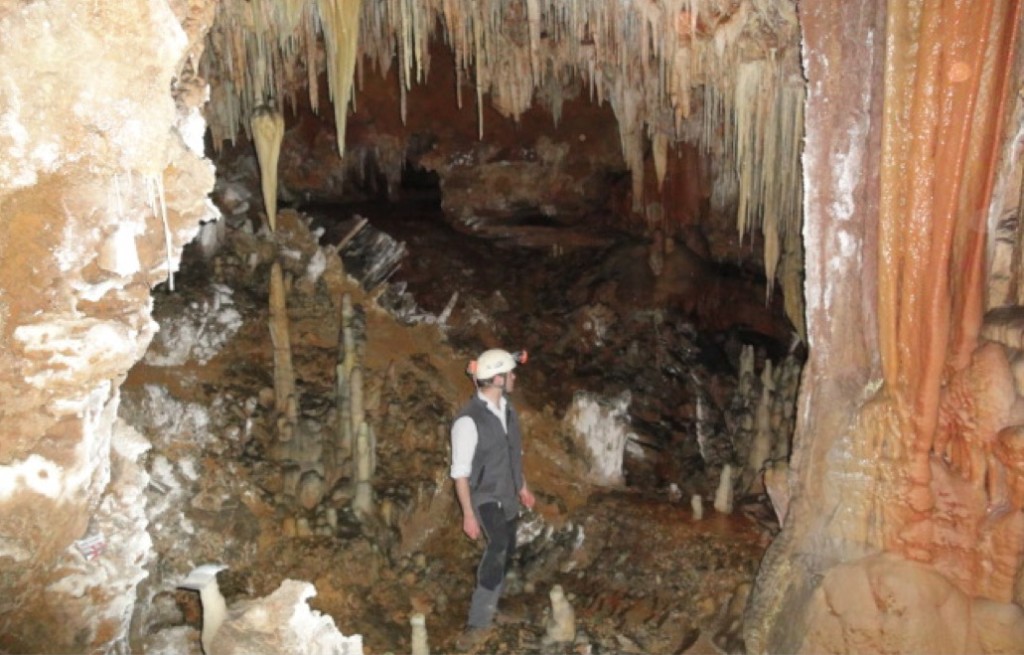Andi recently finished a PhD at Lancaster University, UK and is a now a postdoc in the Stable Isotope Group at NERC Isotope Geosciences Laboratory.
Throughout my PhD project I have been on numerous field trips to the Matienzo valley in northern Spain. This valley is in the foothills of the Pyrenees mountain range about 30 km inland from the northern Spanish coastline. This coastal strip of land is one of the most southerly regions in Europe that receives most of its weather from the North Atlantic Ocean, with minimal influence form other sources such as the Mediterranean. For this reason we focussed on trying to reconstruct past climate change from this region, to act as a southern dipole to northern European records and help to constrain the influence of the North Atlantic on climate throughout Europe.
The Matienzo valley is large closed karstic (limestone) depression which has been slowly enlarging throughout the quaternary (the last 2.5 million years). The underlying limestone bedrock of the region is ideal for the formation of cave systems and currently the valley is known to house over 3500 caves, with some reaching lengths of over 10 km.
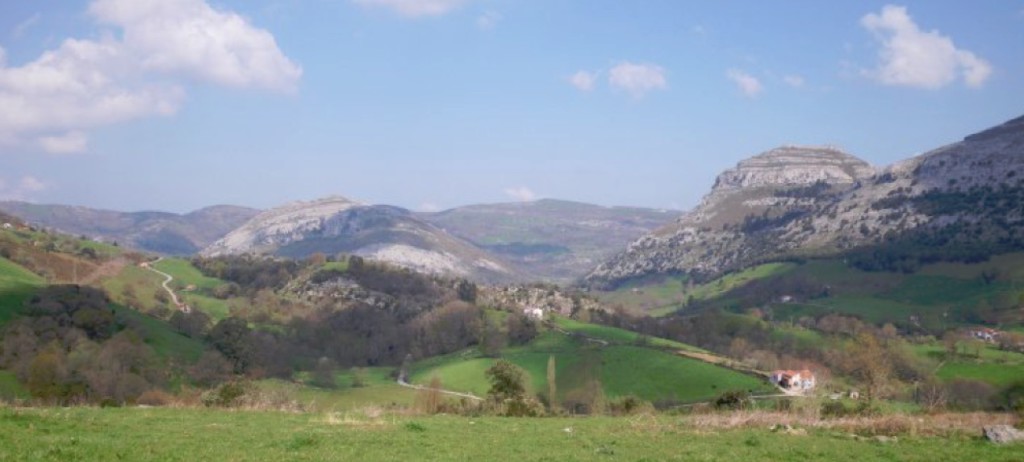
A view across the Matienzo depression: closed karstic depressions have high altitude watersheds running unbroken around their perimeter, meaning that rainwater can only escape the depression in flooded underground cave passages.
The caves in this region have formed over thousands of years by the slow expansion of bedrock fractures through the process of bedrock dissolution. Dissolution occurs most efficiently below the level of the local water table, at a time when the whole cave passage was flooded. Large abandoned (dry) cave systems can be found at different altitudes in Matienzo, indicating a series of reductions in local water level during the last 2.5 million years.
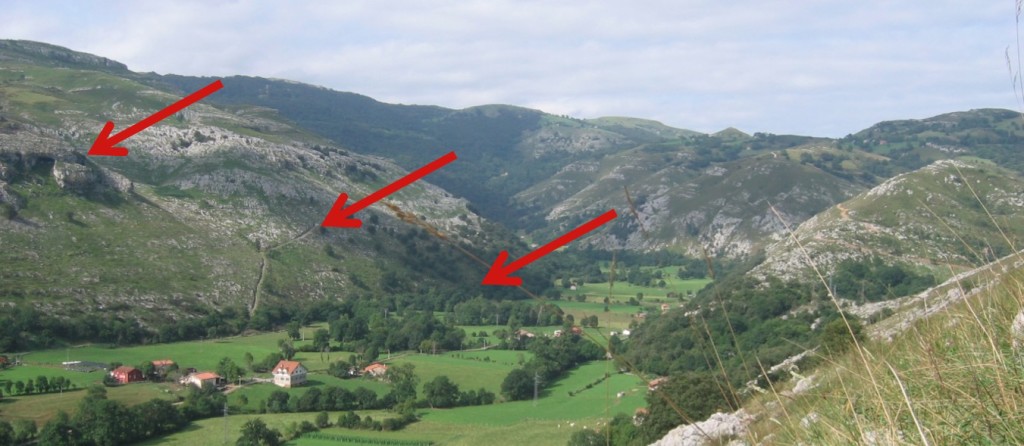
A view across form the entrance to Cueva d’ Asiul showing the entrance locations to several cave systems at different altitudes in the valley.
As well as informing us about the valley formation history, the large number of cave systems means that Matienzo is an excellent region for collecting cave speleothems (stalagmites and stalactites). Depending upon the cave system chosen it is possible that Matienzo houses speleothems that have grown throughout the quaternary.
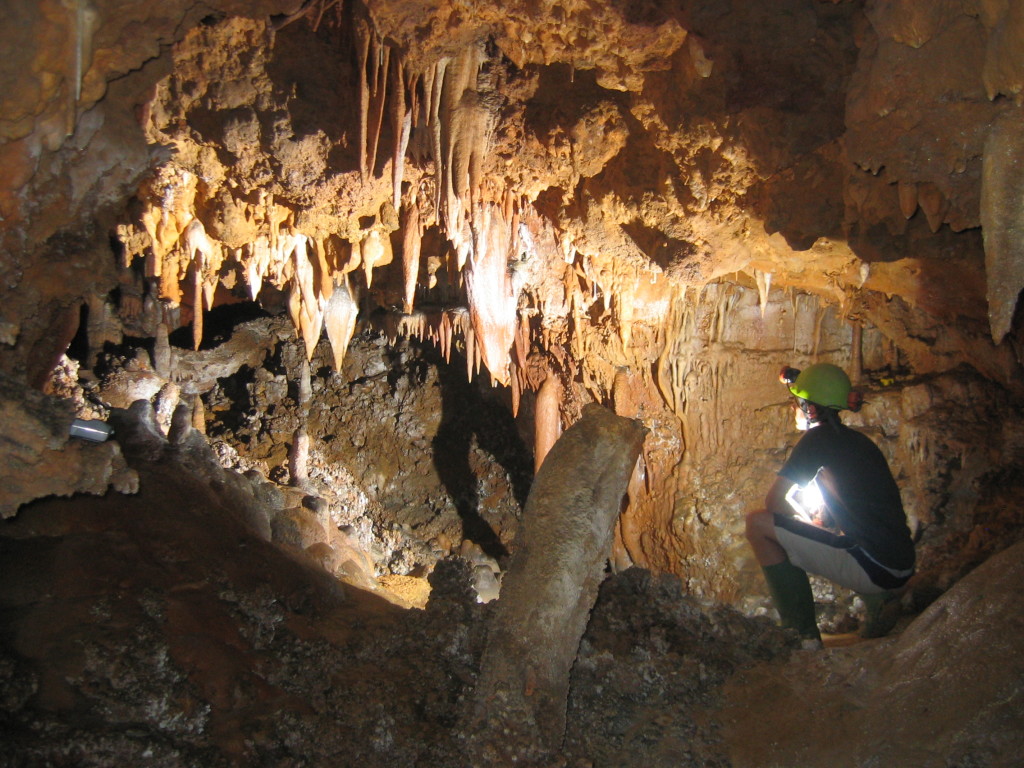
Some of the ancient speleothem deposits found in Cueva d’ Asiul: one of the best things about caving in Spain is that it’s still T-shirt and shorts weather underground!
For my PhD we studied one small cave in detail (Cueva d’ Asiul). This cave is located roughly 100 m above the valley floor level so is relatively young in relation to older caves at higher altitudes. Cueva d’ Asiul houses hundreds of different speleothem deposits, some which are obviously ancient and others which are still actively growing today. We analysed three of these speleothems which had grown slowly during the last 12,000 years. These deposits revealed detailed information about climate and environmental change during their growth history.
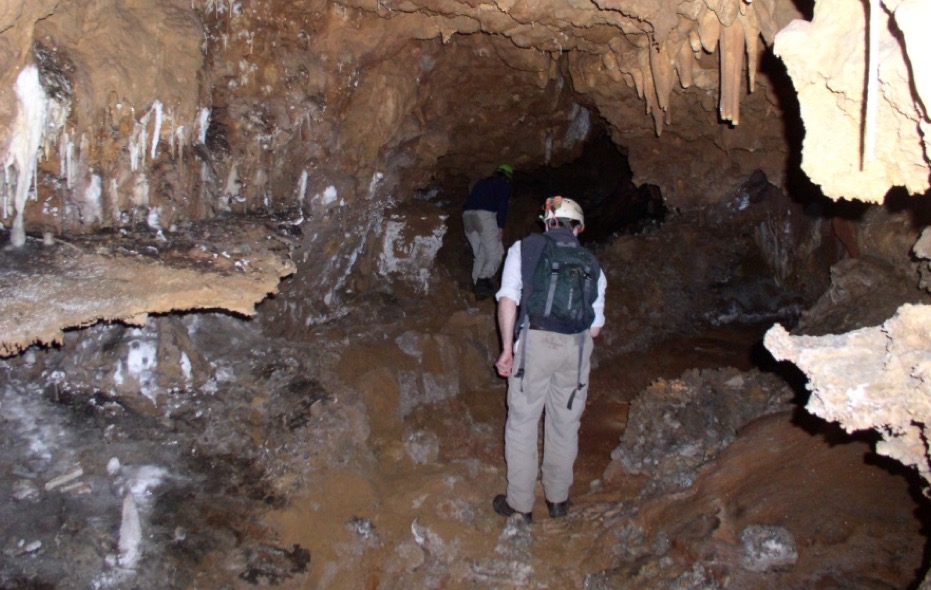
Exploring other sections of Cueva d’ Asiul: The large sections of false floor deposit indicate that the cave underwent several periods of formation.
Alongside speleothem analysis we undertook large amounts of cave monitoring which included the collection of rainfall and cave drip waters as well as the logging of cave temperatures and CO2 levels in the cave air. This characterisation of modern conditions allows us to understand more clearly the environment in which our speleothem samples grew and how this environment may influence the way in which they record chemical proxies of climate change.
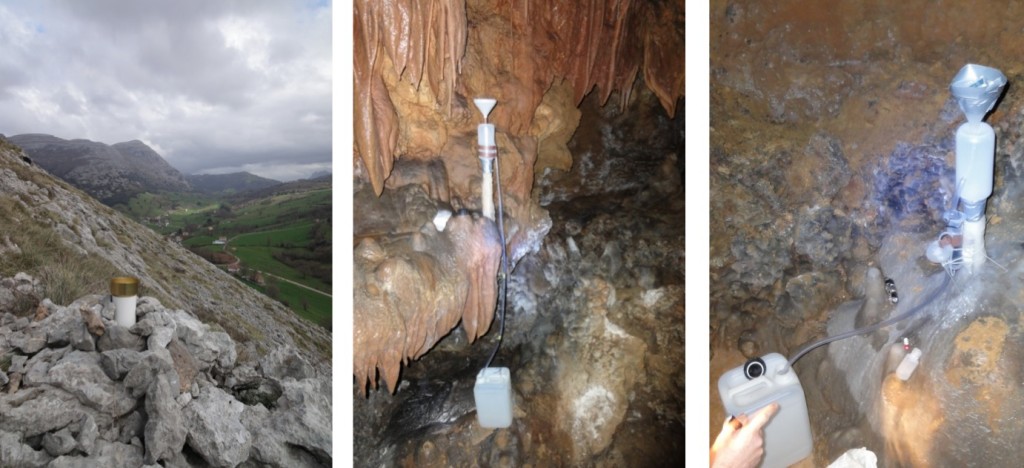
Some of the cave and climate monitoring undertaken in and around Cueva d’ Asiul as part of the PhD project: including rainfall and speleothem drip water collection.
Due to the success of this project further work has been started in other caves in Matienzo, with the aim of extending our Holocene climate records back past the last glacial period. All of this research was undertaken with the kind permission of the Cantabrian government.
![]() This work is licensed under a Creative Commons Attribution-NonCommercial-ShareAlike 4.0 International License.
This work is licensed under a Creative Commons Attribution-NonCommercial-ShareAlike 4.0 International License.

